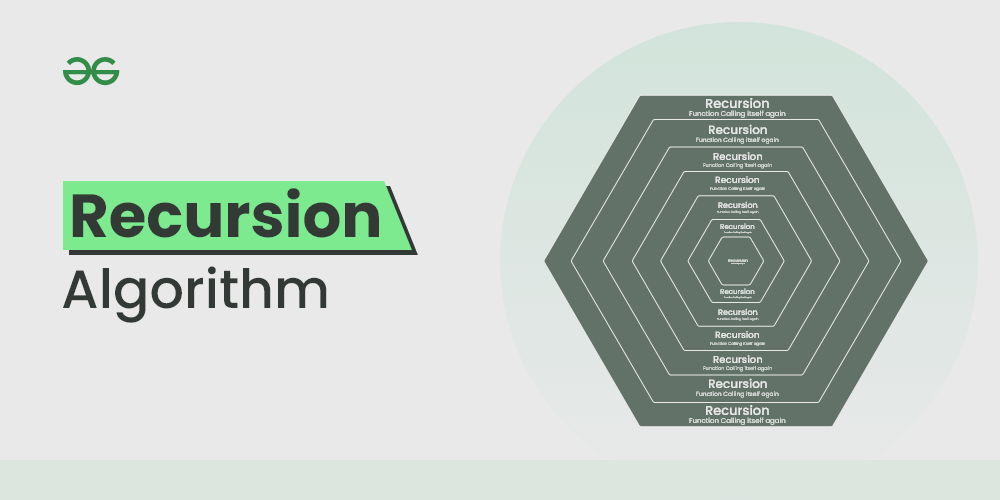Recursion Algorithms
Last Updated :
03 Apr, 2024
Recursion is technique used in computer science to solve big problems by breaking them into smaller, similar problems. The process in which a function calls itself directly or indirectly is called recursion and the corresponding function is called a recursive function. Using a recursive algorithm, certain problems can be solved quite easily.

What is Recursion?
Recursion is a programming technique where a function calls itself within its own definition. This allows a function to break down a problem into smaller subproblems, which are then solved recursively.
How Does Recursion Work?
Recursion works by creating a stack of function calls. When a function calls itself, a new instance of the function is created and pushed onto the stack. This process continues until a base case is reached, which is a condition that stops the recursion. Once the base case is reached, the function calls start popping off the stack and returning their results.
What is a Recursive Algorithm?
A recursive algorithm is an algorithm that uses recursion to solve a problem. Recursive algorithms typically have two parts:
- Base case: Which is a condition that stops the recursion.
- Recursive case: Which is a call to the function itself with a smaller version of the problem.
Types of Recursion
There are several different recursion types and terms. These include:
- Direct recursion: This is typified by the factorial implementation where the methods call itself.
- In-Direct recursion: This happens where one method, say method A, calls another method B, which then calls method A. This involves two or more methods that eventually create a circular call sequence.
- Head recursion: The recursive call is made at the beginning of the method.
- Tail recursion: The recursive call is the last statement.
When to Use Recursion?
Recursion is a powerful technique that can be used to solve a wide variety of problems. However, it is important to use recursion carefully, as it can lead to stack overflows if not used properly.
Recursion should be used when:
- The problem can be broken down into smaller subproblems that can be solved recursively.
- The base case is easy to identify.
- The recursive calls are tail recursive.
Examples of Recursion
Here are some common examples of recursion:
Example 1: Factorial: The factorial of a number n is the product of all the integers from 1 to n. The factorial of n can be defined recursively as:
factorial(n) = n * factorial(n-1)
Example 2: Fibonacci sequence: The Fibonacci sequence is a sequence of numbers where each number is the sum of the two preceding numbers. The Fibonacci sequence can be defined recursively as:
fib(n) = fib(n-1) + fib(n-2)
Applications of Recursion Algorithms:
Here are some common applications of recursion:
- Tree and Graph Traversal: Depth-first search (DFS) and breadth-first search (BFS)
- Dynamic Programming: Solving optimization problems by breaking them into smaller subproblems
- Divide-and-Conquer: Solving problems by dividing them into smaller parts, solving each part recursively, and combining the results
- Backtracking: Exploring all possible solutions to a problem by recursively trying different options
- Combinatorics: Counting or generating all possible combinations or permutations of a set
Learn Basics of Recursion Algorithms:
Recursion in Different Languages:
Easy Problems on Recursion
Medium Problems on Recursion
Hard Problems on Recursion
Practice Sets on Recursion
Quiz based on Recursion:
Share your thoughts in the comments
Please Login to comment...